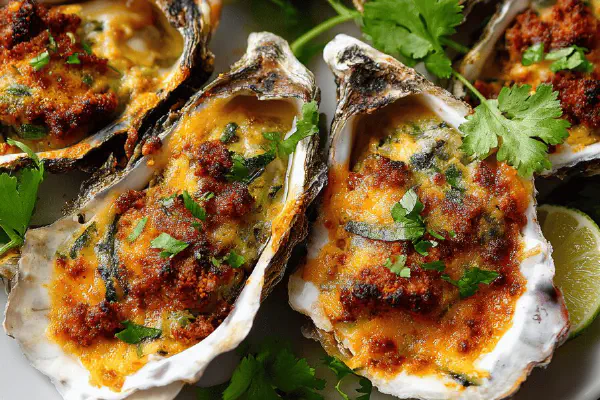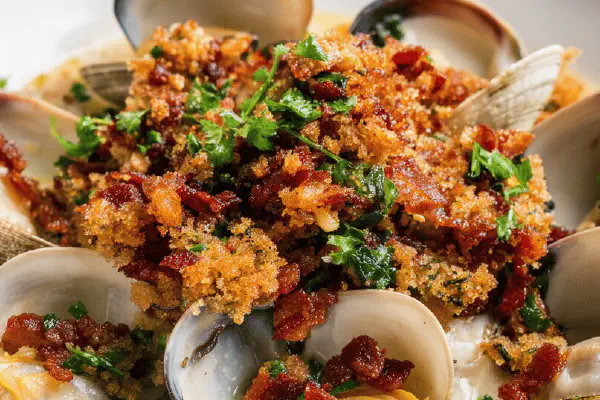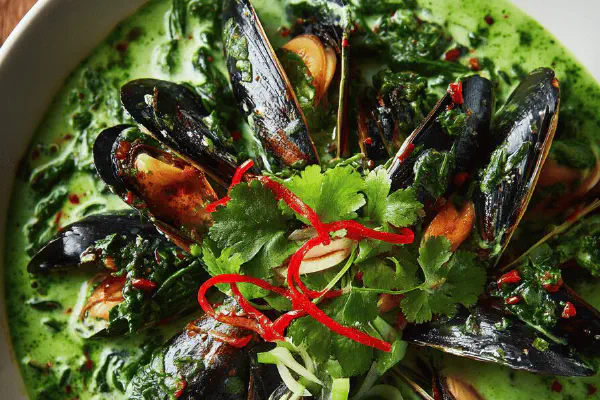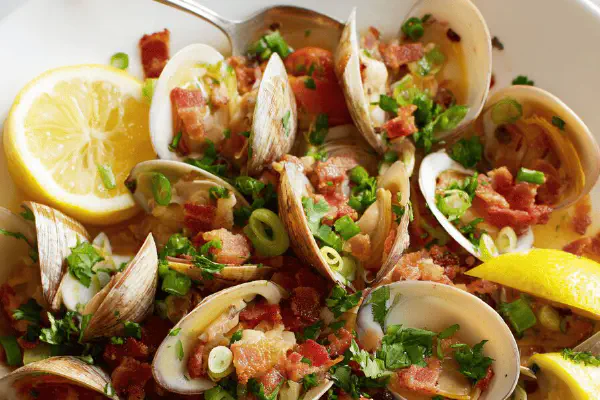Cauliflower Cream Mussels

By Emma
Certified Culinary Professional
Ingredients
- 400 ml or just under 2 cups dry white wine, something crisp like Pinot Grigio
- 800 g or 1.75 lb fresh mussels, cleaned and debearded thoroughly
- 1 medium shallot, finely chopped
- 15 ml or 1 tbsp clarified butter
- 1 medium cauliflower head, broken into florets
- 200 g or just under 1 cup peeled, diced Yukon Gold potatoes
- 700 ml or about 3 cups whole milk or substitute 650 ml coconut milk for creaminess
- 100 ml or just under 1/2 cup heavy cream 30% optional but recommended
- For garnish
- 1 thick slice country bread, cut into small cubes
- 15 ml or 1 tbsp fresh tarragon fresh or parsley if unavailable
About the ingredients
Method
Shellfish preparation
- In a wide deep sauté pan, bring the wine to a rolling boil. Add mussels immediately, cover tightly. Steam vigorously 4-6 minutes until all shells pop open with that satisfying clunk. That deep briny smell thickens the air. Remove pan from heat. Fish out mussels quickly — spread on a sheet pan in a single layer; they finish off cooking and cool fast this way. Discard any mussels staying shut, they’re no-good. Peel mussels carefully, get rid of stomach remnants. Set meat aside in a bowl.
- Strain all cooking liquid through a fine sieve or cheesecloth to capture grit. You want about 500 ml broth; if short, stretch with mild fish stock or vegetable broth, never water. Reserve this liquid for later.
Soup base
- In the same pan (resist temptation to wash it, flavors cling to the bottom), melt butter over medium heat. Add shallot, sweat it slow-ish without color until translucency, soft and fragrant but not sweating it dry. Add cauliflower florets and potatoes next; coat them gently in butter and aromatics. Pour in milk and the reserved mussel broth. Salt sparingly; you can always salt more later. Bring soup to a gentle bubble, then reduce to low flame, cover. Cook until potatoes and cauliflower lose firmness – poke with a knife; should slip in easily but veggies not falling apart, around 17 minutes gives best texture here. Don’t skimp on cooking until tender; raw chunks ruin the creaminess.
Puree and finish
- Carefully transfer soup in batches into blender (hot liquid caution – blend while vented, lid covered with tea towel to avoid splatters). Blitz until totally smooth, velvety, no fibrous bits. Return soup to pan. Stir in cream slowly for richness. Add mussels back in, warm gently 2-3 minutes – too long and mussels toughen, too short they’re cold. Adjust salt and pepper to taste now; flavors marry better warming this way.
Garnish
- Heat a small skillet over medium, add splash of butter. Toss bread cubes in and sauté until golden, crisp, with that audible crunch and nutty aroma. Season lightly with salt and freshly cracked black pepper. Toss in chopped tarragon or parsley last moment to get that fresh herb punch, avoid overcooking herbs or they turn bitter.
Serving
- Ladle soup into deep bowls. Scatter croûtons over surface, let crunch partially soften in hot broth - texture contrast is key. Sprinkle more fresh herbs if desired. Serve immediately, with crusty bread on the side to soak up every drop.
Troubleshooting and alternatives
- No mussels? Swap clams or bay scallops. If you skip shellfish, boost broth with vegetable stock and a dash of smoked paprika or seaweed flakes for umami. Forget white wine? Dry vermouth or light auxerrois works fine; skip altogether and use mushroom broth to add depth. Coconut milk substitution thickens soup nicely but may alter flavor; omit cream if using coconut milk. Potato quantity can be tweaked; more potatoes make soup heavier, less makes it more cauliflower-forward. Always taste incrementally, seasonal vegetable sweetness changes salt need.
Cooking tips
Chef's notes
- 💡 Start steaming mussels in high boil wine. Listen for shells popping open quick. Remove any shut shells immediately; bitter and unsafe. Spread open mussels on tray to cool off fast, stops overcooking rubbery texture.
- 💡 Use clarified butter for sautéing shallots and veggies. Higher smoke point means better fond under cauliflower and potatoes, deeper flavors stuck to pan no wash needed between steps. Slow sweat shallots till translucent, no color, releases sweetness but no bitterness.
- 💡 Blending hot soup best with vented lid covered by towel. Avoid explosions and splatters. Puree in small batches, aim for velvety texture without fibrous bits. Cold blending can leave grainy, rough mouthfeel. Returns to pan, stir in cream slow or reject if dairy-free.
- 💡 Substitute coconut milk for cream for smooth body but expect flavor shift. Skip cream if coconut added. Yukon Gold best for potato base; waxy enough to give creamy texture without gluey mush. Russets turn gluey, not right for silky soup.
- 💡 Toast bread cubes in butter till golden, crisp and fragrant. Toss fresh tarragon last minute just off heat for sharp herb punch. Avoid overcooked herbs, they turn bitter. Salt lightly mid-toast for even seasoning and better crunch retention.
Common questions
Can I skip white wine?
Use dry vermouth or light auxerrois if available. Mushroom broth also works for depth. Avoid water dilution; kills flavor punch. Keep broth warm before adding to soup.
What if mussels close after steaming?
Discard closed shells always. Could be dead or sandy. Overcooking causes rubber texture; cool quickly on tray to stop heat carryover. Swap clams or bay scallops for variation.
How to avoid grainy soup texture?
Blend fully while hot; small batches with vented lid wrapped with towel. Cold blending leaves fibers floating. Taste thickness before cream; thin out cautiously with reserved broth if needed.
Can I store leftovers?
Refrigerate in sealed container up to 2 days best. Reheat gently to avoid toughening mussels. Freeze broth separately without cream for longer. Creamy texture adjusts after thaw, may need stirring or extra liquid.



